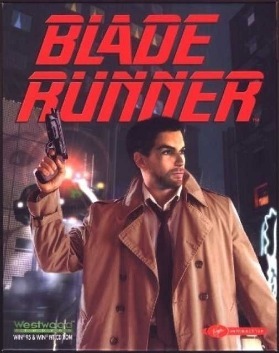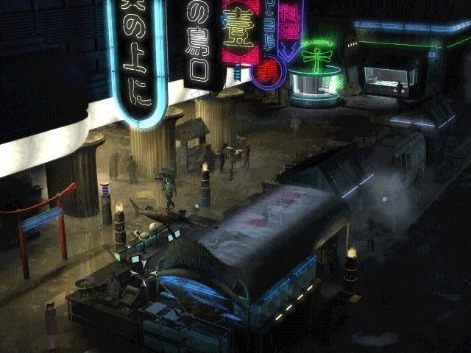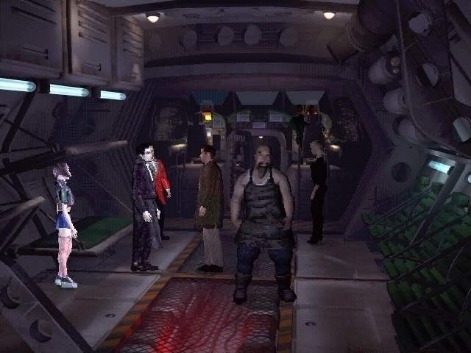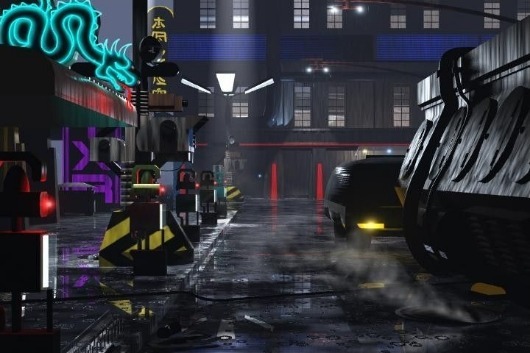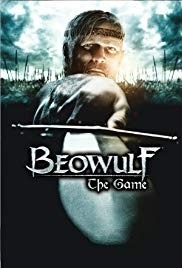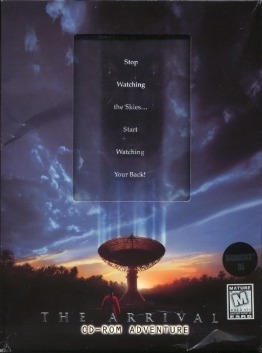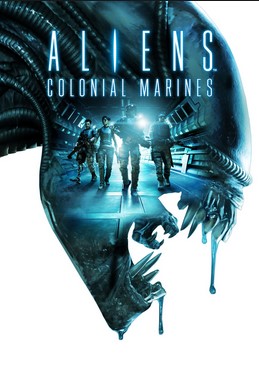Blade Runner is a point-and-click adventure game played from a third-person perspective, in which the game world is navigated, explored, and manipulated using the mouse. The pointer has four different styles depending on the given situation; a standard grey pointer is used to move McCoy by clicking on any location, and scan the screen for elements with which to interact; an animated green pointer indicates McCoy can interact with an object or begin a conversation with an NPC; an animated blue pointer indicates the screen can be changed and a new area accessed (usually appears at the sides of the screen or in doorways); an animated red target becomes available only in combat mode and indicates McCoy can fire (if the target is grey, it means McCoy cannot fire).
Blade Runner's main focus is detective work rather than puzzles or combat, and the majority of gameplay consists of searching for evidence, questioning suspects and analyzing clues. Occasionally, the player must solve compulsory puzzles, and often, to progress the story, certain clues must be located. Clues are found by searching crime scenes, and come in the form of items, photographs, interviews, or unusual markings. When analyzing photographs, the player must use the ESPER system, a high-density computer with a powerful three-dimensional resolution capacity which allows for the enhancement of photos and enables the player to find details within the picture. Combat is occasionally available in the game, but is rarely compulsory. The only weapon available to the player is McCoy's standard issue police pistol, which may be loaded with various types of ammunition.
Another important investigative tool at the player's disposal is the Voight-Kampff machine, which tests people to determine if they are replicants. Usually, Voight-Kampff tests are automatically triggered at certain predetermined points in the game, although on occasion, the player has the option of administering a test. The test depicts a close-up of the subject's eye, and features three needles. The further the top needle moves to the right, the more likely the subject is a replicant; the further the bottom needle moves to the right, the more likely they are human. The third needle is on a sweeping axis and measures the intensity of the questions (for every question the player can choose low, medium or high intensity), and the pressure felt by the subject. If the player pushes the subject too far, by asking too many high intensity questions, the test will end before a definite result can be obtained. If the player determines with certainty whether a subject is or is not a replicant, the test ends automatically. The player must then decide what course of action to take, with the decision influencing the rest of the storyline; for example, if a subject tests positive as a replicant, the player can kill them, attempt to arrest them, or let them go.
Aside from choosing how to react to Voight-Kampff results, the player must also decide how McCoy conducts himself in other areas of the game, such as whether to interrogate an NPC, or simply talk to them, and how aggressive to be in his questioning. The player can choose from one of five settings regarding McCoy's demeanor during conversations; "Polite", "Normal", "Surly", "Erratic" (the game randomly picks one of the first three options at different points of the conversation) and "User Choice". If the fifth option is selected, conversations with NPCs will present the player with menus from which they can choose their questions, rather than the game automatically selecting questions. Each choice will affect the storyline differently, with the player's cumulative decisions leading to one of the game's thirteen different endings.
All clues, conversation histories and documents are stored in McCoy's "Knowledge Integration Assistant" (KIA), where they are automatically organized for easy access. The KIA has three main sections. The "Crime Scene Panel" lists the various crime scenes, along with all known suspects and all related clues. The "Suspect Panel" displays all available information about the suspects for the various crimes. It includes a photo of the suspect (if the player has found one), a list of crimes to which they are connected, and a list of clues which tie them to a specific crime. Suspect clues are arranged into four categories; "Whereabouts" (known places the suspect has visited, and suggestions as to their current location), "MO" (information on the suspect's previous actions, and suggestions as to their possible future actions), "Replicant" (any evidence suggesting the suspect may be a replicant) and "Non-replicant" (any evidence suggesting the suspect may be a human). The "Clue Panel" is a master list of all clues, but also contains clues which have not been linked to a specific crime or suspect as of yet, and, as such, are not available in either of the other two sections. The KIA also keeps track of McCoy's money and ammunition.
The game runs in non-linear "real-time", meaning that as McCoy investigates and gathers clues, the NPC characters are doing the same, completing their own objectives and performing random actions elsewhere in the game world. A good example of this is found in the computer mainframe, which is accessible from the police headquarters. When the player uploads their KIA data into the mainframe, any evidence collected by other Blade Runners is automatically downloaded into the player's KIA. This tends to be random, with different pieces of evidence discovered by different Blade Runners becoming available at different times of the game.
